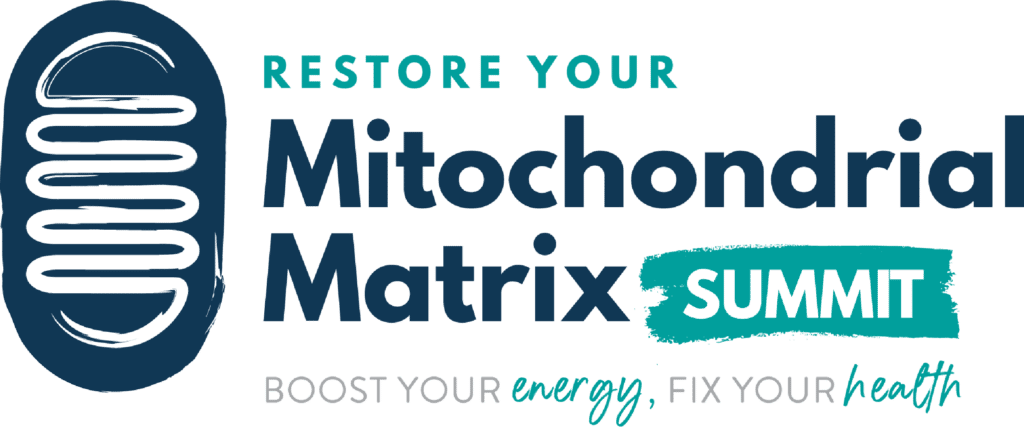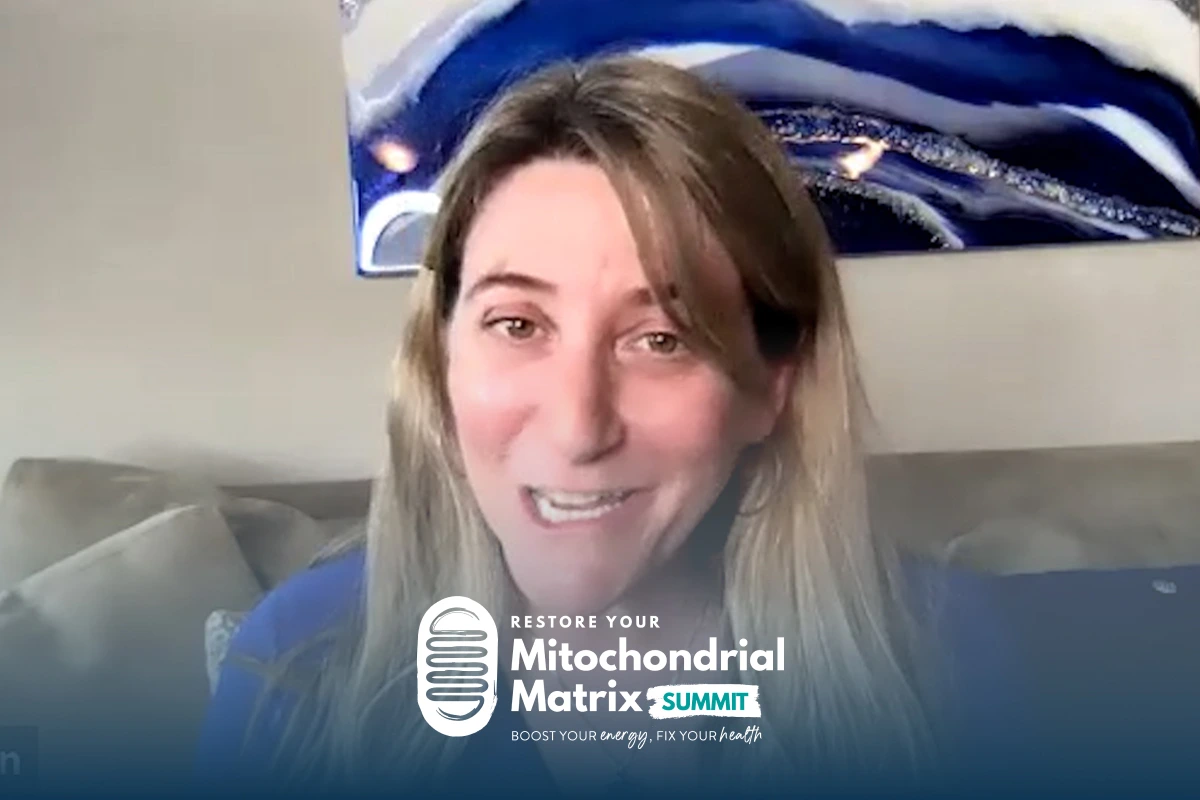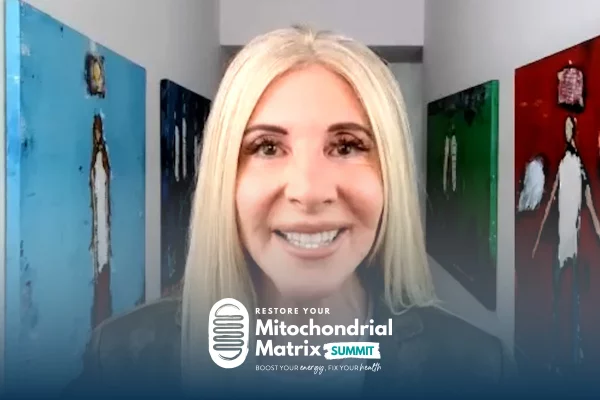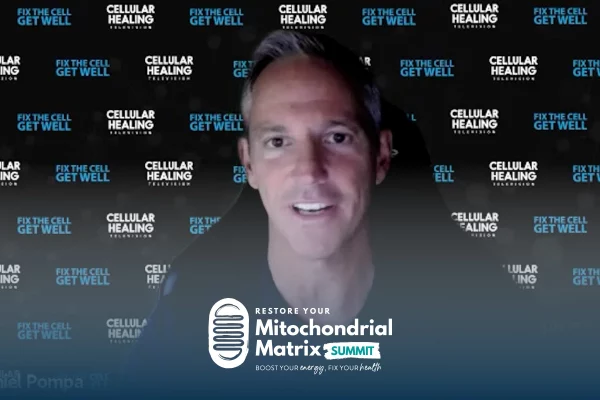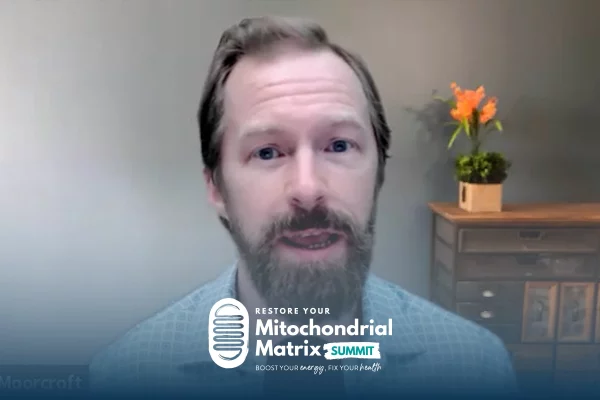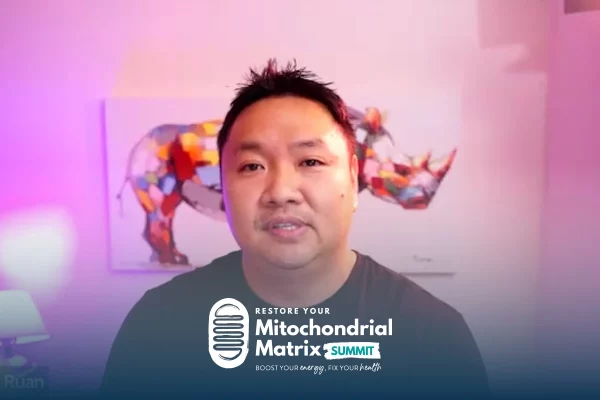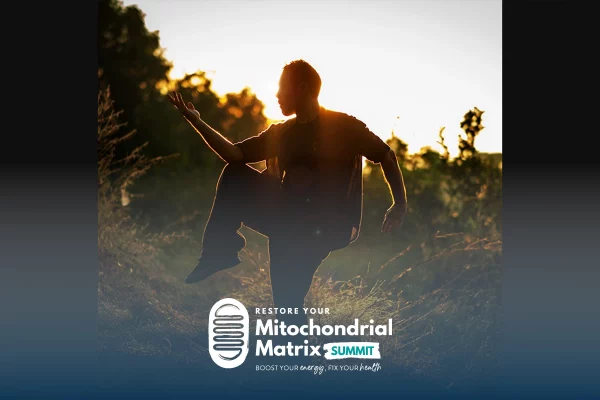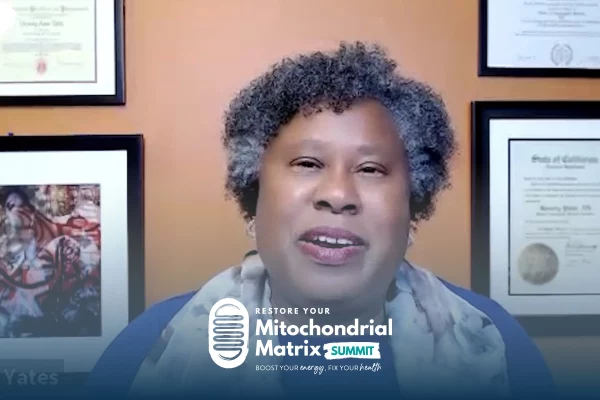Join the discussion below
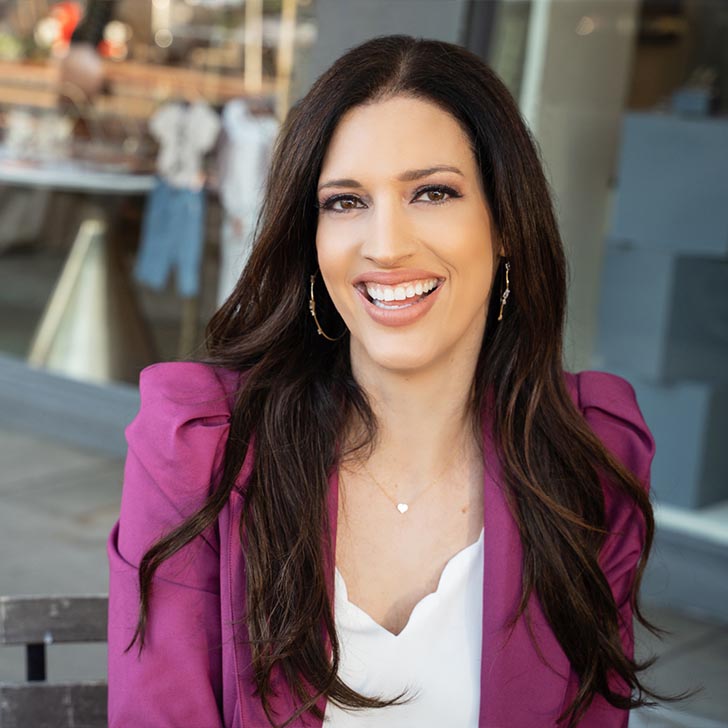
Laura Frontiero, FNP-BC, has served thousands of patients as a Nurse Practitioner over the last 22 years. Her work in the health industry marries both traditional and functional medicine. Laura’s wellness programs help her high-performing clients boost energy, renew mental focus, feel great in their bodies, and be productive again.... Read More

Jodi Sternoff Cohen is a bestselling author, award-winning journalist, functional practitioner and founder of Vibrant Blue Oils, where she has combined her training in nutritional therapy and aromatherapy to create unique proprietary blends of organic and wild-crafted essential oils. She has helped over 70,000 clients heal from brain-related challenges, including... Read More
- The importance of vagus nerve stimulation for mitochondrial health
- How to use essential oils to restore your energy and vitality
- How to reduce inflammation naturally
Laura Frontiero, FNP-BC
Welcome to another episode of the Restore your Mitochondrial Matrix Summit. I’m your host, Laura Frontiero. I’m bringing you experts to help you boost your energy and fix your health so you can build the life you love. And today my special guest is Jodi Cohen. Jodi, welcome to the summit.
Jodi Sternoff Cohen
Oh my God, thanks for having me and for wearing my favorite color.
Laura Frontiero, FNP-BC
I know, blue all the way, baby. Well, you are a bestselling author and award-winning journalist, a functional practitioner, and founder of Vibrant Blue Oils. And you create unique proprietary blends of organic, and I love this, wild-crafted essential oils, that makes me wanna buy them right now. And you’ve helped over 50,000 clients heal from brain-related challenges, including anxiety, insomnia, autoimmunity, and we can find you everywhere. You’ve been featured on The New York Times, Wellness Mama, Elephant Journal, numerous publications. You have a website, vibrantblueoils.com. It’s visited by over 300,000 natural health seekers every year. And it’s a top resource for essential oil education on the internet today. So, wow. Welcome and thank you. I’m so glad we have an authority here.
Jodi Sternoff Cohen
Oh, thanks for having me. And I love talking about oils and mitochondria. This will be fun.
Laura Frontiero, FNP-BC
It will be. Okay, so we’re gonna get into that. And first I wanna know how the heck you got here. How did you start an oil company? What happened?
Jodi Sternoff Cohen
You know, it’s really funny. Necessity is the mother of invention and I was always kind of an athlete, so I thought I was healthy. And then first kid was super easy. I just assumed I’m a great mom, had number two, totally different child, really challenging. Kept going to parenting classes to try to get him. One of our cues, we used to point to our nose and say, “Look at my nose,” and he didn’t look at our nose.
Laura Frontiero, FNP-BC
Oh!
Jodi Sternoff Cohen
Yeah, yeah. And then one day we were at a birthday party and my friend was complimenting me. “Oh my God, look at how well-behaved Max was.” And I was having that proud mom moment. And then, literally, another mom passed out a snack. It was like a Ritz cracker. He ate the snack and took off running in the other direction. I’m like, here we go. And went and got and brought him back and she said, “Okay, I have to tell you, my brother was on Ritalin his whole life and it turned out he was just allergic to weird foods. Max, totally Jekyll-Hyded after he ate that cracker, you should take him to a nutritionist.” And I thought I can certainly do that. I’ve done everything else.
Went to the nutritionist who told us he was really sensitive to excitotoxins, artificial colors and chemicals, and had us take him off of soy, corn and dairy. And the next day, he could look at our nose and I thought, “This is crazy. I have been banging my head against the wall for three years and it’s food. I need to learn more.” So I went back and got a degree in nutritional therapy and was trying to help other moms with busy kids, which I mean, as you know, they’re nonstop. And so I live in Seattle near best year, I learned this great technique called muscle testing, which helps you very quickly assess what the priority is and what remedy is going to balance that out. And then the other shoe dropped, my husband at the time got very depressed after my son was born and it got to the point where I was terrified he might die on my watch. And so, friends had an intervention, we moved him to a residential treatment facility.
And once I knew he was safe and it wasn’t my job to keep him safe, it was kind of like my adrenals went on strike. They just were like, “We’re done. We don’t have energy to help you get up.” And the kids were five and seven. So my day looked like, they woke me up in the morning, I’d get up with them, make their breakfast, help with homework, pack lunch, drive them to school, come back home, crawl into bed, set the alarm for pickup. And that was literally all I could handle. And I’m like an athlete, lifelong runner. Walking up the stairs felt overwhelming. And this just wasn’t sustainable. I was like class parent. I was super volunteer. I had a job and little kids. And nothing I was ingesting seemed to be helping me enough. And so a good friend that I had helped with a fundraiser came over with a big box of essential oils and said, “These will help you. Here’s why. You have been so stressed, which means so high cortisol, which means so inflamed in the gut that nothing you’re ingesting is actually getting into your system.
Oils are back doors. You can inhale them and they go directly to the brain. You can topically apply them and they get through the skin into the system, try this.” And I thought “I have nothing to lose, why not?” Muscle tested the boxes is gonna help my adrenal glands, got a really strong yes. And then was trying to narrow it down to one remedy. And I kept getting the same five oils, which confused me until it occurred to me, “Oh, wait a minute, they’re liquid. I can combine them.” So I, oil newbie, went into the kitchen, grabbed a shot glass, like I was making a mixed drink. I’m testing three drops of this one, seven of this one, put it together, put it on my low back because I was familiar with other topical remedies that you put on the low back where the adrenals are accessible and felt like myself. It was so bananas.
I’m like, “Wow, I could go running. I could go to the supermarket. I could clean the house, I could do all the laundry and put it away.” Everything that I had been avoiding, I got done that day. And that night I thought, “Wow, that was really a win.” But nighttime was another experience because I’d put the kids to bed and then I would lie awake, like looking at the clock, kind of praying for sleep. It’s not uncommon to be exhausted during the day and then insomniac at night. So I had another thought. I was like, “Wait a minute. I know that there’s a GABA remedy that you can put kind of above your ears on the skin. I wonder if I can make up an oil blend for sleep.”
So I made something else up, put it on, don’t even remember falling asleep. My five-year-old woke me up the next morning and I was like, “Okay, that was a win.” So I just kept making things up based on what I knew of physiology. And when I started to feel better, all my friends wanted to try it. And it seemed to work on them and their clients. And they kept telling me, you have to do something with this. And I thought, well, someone must be doing this. So I finally had the mental bandwidth to go online and do some research. And I was super surprised to realize that most oil companies are really focused on singles. They’re not making their own blends to balance organ systems and regions of the brain. And the other thing that surprised me was how complicated they made it sound. I was almost grateful that I just didn’t have the mental capacity to research first because I would’ve felt completely unqualified.
Laura Frontiero, FNP-BC
So this is remarkable. So basically, what I’m hearing you say is, you took your skill at muscle test and you took this box of essential oils and you took your knowledge of human anatomy and physiology, and you literally figured it out that simply.
Jodi Sternoff Cohen
I made something up that seemed to work because I was looking at it through the lens of how do you. What I didn’t realize and that I stumbled upon is everything’s really frequency.
Laura Frontiero, FNP-BC
Yeah.
Jodi Sternoff Cohen
Like color or bright blue color, it’s a frequency. And just like you can combine colors. You can take red and blue and make purple, add some white, it becomes lavender. There are frequencies in nature that you can combine in oils to kind of match the frequency of healthy organ tissue.
Laura Frontiero, FNP-BC
Wow. Okay, so mind-blowing, right? For anybody watching right now who doesn’t already know this, Jodi’s gonna blow your mind some more. So we’re gonna get into brain today and vagus nerve and parasympathetic nervous system, and the brain-gut connection. And we’re gonna weave mitochondria into this because as people are realizing, as they’ve watched this summit, mitochondria are central to everything in our body, every function, every system. And if they aren’t working, it’s really hard to heal the body. So let’s start with mitochondria and how we can support mitochondria with essential oils. And then let’s unpack all these other pieces.
Jodi Sternoff Cohen
Yeah, so mitochondria, I think of as like the batteries in the system, right? And they’re producing energy. They’re helping you function. They’re helping everything come into action. And what oils, I think what oils really do is they help with the communication in the body. If you think about what they do in plants, they help communicate, the roots are deep in the earth and they’re collecting water and the leaves can be hundreds of feet in the air, they’re moving things and signaling throughout the body. So one of the things that they can do for the mitochondria is help send the signal that it’s safe, that they don’t need to be focusing energy on survival and allocating resources in that direction, but it’s safe and they can start to focus on healing, restoring and regenerating.
Laura Frontiero, FNP-BC
Oh, that’s really big. So what you’re saying is if those mitochondria don’t feel like they need to be in a responsive mode all the time, if they don’t need to be producing something more, then you’re gonna have a healthier system, a healthier mitochondria, a healthier body systems, healthier brain.
Jodi Sternoff Cohen
Yeah, I almost think of it like two gears in the brain. It’s your autonomic nervous system, which controls your automatic functions, your breathing, your heart rate, your immune system, your inflammation, and it’s designed to keep you alive. So if it thinks survival is at stake, either some kind of physical danger. You’re driving, the car in front of you is changing into your lane and doesn’t see you. Or a mental or emotional danger. You turn on the news and worry that you’re gonna get sick and kill someone’s grandmother or some kind of thought-driven danger. You have an altercation with someone you love or someone you work with. All of these things can make you feel not safe.
And when your body feels not safe, it shifts into what’s known as the fight or flight gear, the sympathetic branch of the nervous system, and it allocates resources towards survival. So this is anxiety. Your heart starts to beat faster so you have more blood for energy. Your lungs start to take in more oxygen, which can feel like hyperventilating so that you have more energy. And blood is routed towards arms and legs so you can either fight back or flee and away from your core where you digest your food, where you detoxify, where your immune system turns on, where you anti-inflame. And so just like everything else in the body, the mitochondria are resources that are either allocated towards survival, high alert, or repair, restoration, and maintenance. And so the more you can tell, you can kind of shift into that parasympathetic rest, digest, regenerate, heal state, the more the mitochondria can kind of follow suit.
Laura Frontiero, FNP-BC
Yes, so what we wanna do is be in parasympathetic as much as possible and out of the sympathetic response. So let’s dig into that. Clearly, if you’re in parasympathetic, your mitochondria are going to work more efficiently, you’re gonna have more energy, you’re gonna heal faster, you’re gonna get rid of inflammation. So what do we do about that from an essential oil standpoint? How do we get into parasympathetic?
Jodi Sternoff Cohen
Yeah, so what’s really interesting is your gear shift between fight or flight, not safe, and parasympathetic, safe, is your vagus nerve. Longest nerve in the body, most people have never heard of. It sounds like what happens in Vegas stays in Vegas, but it’s actually spelled V A G U S. I’m gonna give a super quick anatomy lesson because it’s helpful to know where the vagus nerve goes so that you know how you can activate it to kind of activate parasympathetic and turn on your mitochondria for healing. So it starts at the very back of the neck ’cause it’s the information super highway. It connects the brain to the body, body to brain. And from the back of the neck, it splits and it winds around both sides of the neck, and is most accessible, if you feel with me, behind your earlobe, between your earlobe and your bone, that’s the mastoid bone, there’s a divot.
It’s an acupuncture point that has a divot, that is kind of the panic-pause button, parasympathetic on switch because it’s where the vagus nerve is most accessible to the surface and the thickest. It then winds through your throat, your heart, your lungs, every organ of digestion and detoxification. I was an early follower of who lives in your area in San Diego. And he would always talk about the vagus nerve, but his ways to activate it were like gag yourself with a tongue depressor. Gargle until you cry. Give yourself a coffee enema. All of these things work because they activate the vagus nerve. But let me tell you, compliance was nil. Say like, “Okay, go have fun, you’re gonna gag yourself until you cry.”
Everyone would look at me like I have three heads, like not gonna do it. So I’m like, I have to make this easier. As a parent, you’re trying to make everything easy for your kids so they do it. So I’m like, what would people do? And I stumbled upon this fascinating research. There was a New York neuroscientist named Kevin Tracey, who was surgically implanting a pacemaker-like device, right on that spot behind the earlobe. And he was using it to stimulate the vagus nerve and getting tremendous results. In fact, the FDA approved this for epilepsy, migraines, and depression. And when I realized he was stimulating this almost counterintuitive, like, wait a minute, you’re stimulating to turn on calm. But it was very triggering because so many essential oils are stimulatory. In fact, this is kind of a problem.
People put oregano in their arm and then they’re like, “Ouch, it hurts and it’s red.” And if that happens, you don’t wanna use water ’cause oil and water don’t mix. You just take any oil in your kitchen and dilute it. But there are all these stimulatory oils. There’s oregano, thyme, rosemary, peppermint, clove, cinnamon. So I started playing with using stimulatory oils on that point and was having great success because you can use oils on acupuncture points to turn on systems in your body. And this was a big aha moment for me because most people, when they think of oils, they’re like, oh you can, there are three things you can do. You can smell them or diffusing counts as smelling. You can drink them, which I don’t love doing.
Or you can topically apply them. But they assumed like, okay, you sprained your wrist or something, you’re gonna put some Helichrysum or anti-inflammatory oil on your wrist and it will help your wrist. But they’re not thinking it’s gonna help your leg or your shoulder. It’s just gonna be local, not systemic. Because in their mind, in order to get to the whole body, it has to go through the skin to the blood vessels, get carried to the heart and then be pumped body wide. And they’re not wrong, but there’s also alternatives. The whole acupuncture system and Meridian system, you don’t necessarily need to have it go through the blood flow. You can put it on an acupuncture point and it has that same systemic response, but in a much more efficient manner. So that’s what I’m really trying to do. I’m trying to make this easy and accessible so that people can literally turn on healing. You’re about to sit down and have a meal.
Digestion begins in the brain. It’s the vagus nerve that signals the mouth to release saliva. So if you have a dry mouth, that’s what’s going on. The stomach to release hydrochloric acid. So if you have acid reflux or GERD, that could be part of the issue. The pancreas to release enzymes, the gallbladder to release bile. The stomach, it’s almost like the moving walkway, the motility wave in the stomach. If you think there’s danger, it doesn’t really matter if you’re digesting your food. So you have to be parasympathetic so that things move and waste leaves. So it’s just another way, like in addition to everything everyone else is talking about, you can use oils to kind of turn on your parasympathetic nervous system so that your mitochondria are turned onto heal and restore and regenerate.
Laura Frontiero, FNP-BC
And you’ve totally taken the guess workout. I mean, you have created blends that absolutely support this. And the other question. So I want you to talk about those and the blends ’cause people are gonna wanna know like, “Well, what should I take?” Or what should I use and how often?
Jodi Sternoff Cohen
Yeah.
Laura Frontiero, FNP-BC
And can it be all the time, all day long? Do you need a break from it? Talk about that too. How would you-
Jodi Sternoff Cohen
Yeah. Well, you know, when you start working with people that have had a health struggle for a while, they start to second guess themselves and they start to wonder like, “Am I doing it wrong? Did I mess it up?” So I really didn’t want, I wanted to take that stress off the table. I joke, one time we went raspberry picking and we made raspberry jam. I still have raspberry jam in my freezer. I do not need to make 24 things of raspberry jam. But it was a nice, it was fun to do it myself. So I’m not really a do-it-yourself girl. Even during COVID, I wasn’t making my own bread. I’m gluten free, but my kids eat bread. So if I needed bread, I would go to the store.
But yeah, it’s parasympathetic is the product and we’ll give you guys a coupon, but it’s just clove and lime and it’s done for you. And literally, just already diluted, flip the bottle, put it on here. I tell people, most people when they’re starting a new habit, if they can link it to another habit, it’s easier. So I tell them, just leave it by your toothbrush. I’m pretty sure most people listening brush their teeth at least twice a day. Do it when you brush your teeth. And then they start to notice, “Oh, I feel better. Oh, I feel less anxious. Oh, I’m less bloated.” Or if they’re constipated, they’re like, “Oh, that’s not a problem anymore.” So then maybe upgrade to just doing it before your meals to turn on digestion. And if you’re going through something hard, like election day, I probably use this every five minutes. You can use it as often as you would like, and it can be a really nice little gear shift out of stress.
Laura Frontiero, FNP-BC
That’s so amazing. So really safe and effective. You can’t overdo it and you’re gonna benefit everything from digestion to your brain feeling calmer, sleep, elimination, everything gets better.
Jodi Sternoff Cohen
Yeah, and we can talk about inflammation. The one thing I will say is that a lot of people, you know, think about delayed maintenance. If you haven’t cleaned out your closet in a decade, it’s gonna get messier before it gets cleaner. So sometimes what people notice is they turn on the parasympathetic nervous system, the body says, “Oh my God, it’s safe to take the garbage out.” And it just starts dumping. And if your lymph flow is congested or you’re not eliminating, then those toxins are kind of mobilized, but aren’t necessarily leaving. So if people are noticing that, I have them take a pause and we have a lymph blend and then we talked about our friends at Cellcore, have some amazing binders, which makes sure that whatever you are eliminating actually gets kind of carried out of the body. So that’s the only, it can’t do harm, but sometimes if you’ve had a lot of delayed maintenance and your body’s playing catch-up, there are other things you can do to kind of make sure that it’s a seamless, easy experience.
Laura Frontiero, FNP-BC
Yeah, really good point to bring up. And we have lots of people from Cellcore speaking on this summit. Cellcore is something that I use in all of my programs. Since we brought that up a little bit, could you tell people what symptoms they might be noticing if they start to detox a little bit fast? What should they look for?
Jodi Sternoff Cohen
The main one is a headache and fatigue. And this is why, like, if you ever kind of do one of those cleanses and give up coffee, you have a headache. It’s just the toxins kind of mobilizing and not yet leaving. Because what happens is they turn on the immune system and the immune system turns on inflammation. And inflammation, it can feel like pain, but more often it feels like fatigue or a mild headache, not paralyzing migraine. Or kind of brain fog where you’re just like, “Wait a minute, I walked in the pantry. I know I came in here for something, what was I coming in here for?” You know? That kind of stuff.
Laura Frontiero, FNP-BC
Okay, good, good. All right, so parasympathetic stimulation, really important. Vagus nerve stimulation, super important. Can we talk a bit about just the inflammatory process in the body and inflammation? Because that’s a killer for mitochondria. Inflammation drives all kinds of disease process and allergies and intolerances in the body. And so what do you have to say about that from an essential oil perspective?
Jodi Sternoff Cohen
Yeah, and I mean, there are a lot of things that turn on inflammation. And obviously, if you’re celiac and you’re addicted to pizza, this will help, but you kind of need to eliminate the root of the problem. But one thing that’s really interesting is, the vagus nerve releases the neurotransmitter acetylcholine, which helps to turn off inflammation. They call the vagus nerve the anti-inflammatory nerve. So while you’re working on all the other things, cleaning up your diet, taking probiotics, expanding, adding more vegetables so you have the flavonoids, being able to stimulate your vagus nerve helps to calm systemic inflammation in the body because it’s really the anti-inflammatory mechanism.
There are also, I mean, it’s interesting. There’s a ton of research on eugenol, which is a constituent of clove oil that helps with inflammation. The other well researched oils for inflammation is frankincense. Frankincense is a really good all-around player. And that’s a great one. My mom swears by it. She puts it kind of at the back of her head every day and she thinks it’s great. But Frankincense is very hit or miss, you either love it or you don’t love it. So if you don’t love it, that’s not your oil. Helichrysum is great, ginger. A lot of the spices, the anti-inflammatory spices, like ginger and fennel are great examples. Not every herb works the same way as an oil, but those two are really powerful. And if you have any kind of digestive upset, I mean, yes, you can drink peppermint tea or ginger tea, or you can smell a little bit of oil or rub a little bit around your belly button.
Laura Frontiero, FNP-BC
Oh, such a good tip.
Jodi Sternoff Cohen
Yeah, we have those, we have a digest blend and we have an anti-inflammatory blend, but for people that are new to this, you can intake this any way you want.
Laura Frontiero, FNP-BC
Yes! And you’re not gonna hurt yourself with it. Like Jodi just said, if you go, if you’ve been in a inflammatory kind of toxin overload for a long time, you might start to release. But there’s some support for that. Take some binders.
Jodi Sternoff Cohen
And it’s good. It’s kinda like when you’re finally tackling your closet and you take everything out and you’re like, “Oh my God, this looks like a war zone.” But then you clean the closet, you put back what you need. You give away what you don’t or throw away what you don’t. The only way out is through, and this helps you get through.
Laura Frontiero, FNP-BC
Totally. I’m so glad you said that. It is the only way. We cannot avoid. You lived into this, you get to live out of it. Okay, so let’s talk a little bit about brain health, because I know that this is, we were talking really about nervous system in general, but I’d love for you to get into brain health and neuroplasticity, and really talk about that because you’ve helped so many people overcome brain problems. So can you talk a little bit about that?
Jodi Sternoff Cohen
And it’s really funny. I’m very good friends with Dr. Christine Schaffner and she often says, people think they’re so complicated. And on one hand, it’s complicated. On one hand, it’s really quite simple. The three main things that people need to do to heal is sleep. Be able to fall asleep, be able to sleep through the night because that is when the brain cleans house. And if the toxins, even the metabolic waste is stuck there, then the immune system responds, then it turns on inflammation. And inflammation is what causes all these problems. So sleep is priority one. And we do have oils for sleep that I will get into. But priority two is stress. If you’re in the wrong gear, if you’re always thinking that you’re unsafe, you can never kind of clean house. It’s like for anyone who has a big party, right? You have a party, all the people are there, there’s a mess that’s being made. Food drops, food spills, whatever.
They leave and then you get to clean the house. Imagine if they never left and the house is just constantly getting dirtier and dirtier. So you really need to be able to activate your parasympathetic nervous system to heal. And then the third thing is what we’ve been talking about, drainage. If the garbage doesn’t leave the body and keeps recirculating, it’s really hard to heal. And one of the big bottlenecks to leaving the body is the neck. The neck is what connects the brain with the rest of the body. And so what happens during sleep, when you’re awake, your brain needs to be kind of full speed, full size to pay attention. When you’re sleeping, it shrinks by as much as 60%. And it’s washed by a brain version of the lymphatic system. It’s called the glymphatic system. And it’s almost like a car wash. It’s kind of immersed in fluid and cleaned. And then everything, the exit route is the neck. Everything drains down the neck and the neck is a bottleneck because there’s a lot going on there.
You have, obviously, your skeletal system, your muscles, your nerves, including your vagus nerve, your lymphatic system, your vascular system. And it can get a little bit like, if you’ve ever been in the middle seat in the airplane between two linebackers. You’re not putting your elbows on. You’re lucky if you can read your little book in your little space. So all of this garbage is trying to drain down and these other organs are kind of compressing in. So this is where I think oils are kind of magical because you can stimulate the vagus nerve to make it work. This is actually a point where congestion can occur because garbage from the mouth, both natural garbage and things from metals or cavitations or any kind of microbes can drain and get stuck right here ’cause it intersects with the vagus nerve and cause kind of inflammation, which means things don’t drain, your limbs can get congested, your vascular system, all of these things. I mean, one of the practitioners I work with used to say, “If you were like a bug and you were trying to get the most nutrient-dense rich blood, you would hang out in the neck.”
‘Cause everything, the premium stuff goes to the brain. And so, there’s a lot that can go on there. And this is a hard place. If you’re ingesting a remedy and it has to go through your digestive track and to the heart and get pumped to the body, it takes a while to get here. If you’re using an oil, you can just topically apply right in the area where you want it to go to. And the beauty of carrier oils, like we use fractionated coconut oil, which gets in quickly. Castor oil’s a great one ’cause it really gets into the skin. But this is the fastest way to get remedies to where you want them to go and help ensure that this bottleneck is opened up. It’s almost like if the freeway’s under construction, it should have four lanes, but it has one big bottleneck. But then, oh, construction is over and all the lanes are opened up, you can move more quickly. You’re helping to open up space so that the bad things can leave.
Laura Frontiero, FNP-BC
It sounds like you can solve a lot of brain-related symptoms, fogginess and poor retention and just poor sleep and that brain fatigue. It sounds like you can solve a lot of that with opening up that kind of pathway and super highway, get those lanes open.
Jodi Sternoff Cohen
Yeah. And what I really want people to take away from this is that even if you’ve been diagnosed with something and you have a label on you, these three things are still gonna help a lot. It might not get you all the way across the finish line, but it will certainly get you from mile zero to mile 15. So you need to sleep, you need to make sure that you’re activating your parasympathetic nervous system and not stress. And you need to make sure that the good things can get in and the bad things can get out.
Laura Frontiero, FNP-BC
Yep, that drainage. I love that we’re talking about that. And I’m always talking about drainage in other areas of the body. The gallbladder and the liver and the kidneys and the bowels, and you cannot leave out this drainage from the brain.
Jodi Sternoff Cohen
Yeah. I know it’s funny, most people forget, it’s almost like they. Here’s what they call. One of the mainstream hospitals here in Seattle was like, “Oh, we have an all-inclusive gut health center.” And I’m like, “Okay, so is anyone looking at what these people are eating?” And they’re like, “Oh no, why would we do that?” And I’m like, “Well, I don’t know.”
Laura Frontiero, FNP-BC
Yeah, you can’t leave out that vital piece.
Jodi Sternoff Cohen
Well, and almost like they think of the brain as a separate entity.
Laura Frontiero, FNP-BC
Or that it doesn’t need to drain. I think a lot of people listening right now are hearing for the first time that my brain has to drain? There’s toxins in there and it gets cleaned and bathed and drains out?
Jodi Sternoff Cohen
Yeah, in the exit ramp. Yeah, so you just wanna make sure. And even, it’s really interesting, lymph doesn’t drain evenly, it drains more on the left side. So if you go ahead and feel on your clavicle bones, you can just gently kind of caress or massage them. And what most people don’t realize, if that’s remotely tender, don’t worry, you can fix it. It’s like a knot you can untangle, but you’re gonna wanna just gently kind of touch on that point. Or if you do tapping, that’s a good point to tap ’cause then it just kind of removes the congestion, so it makes it easier for the bad things to get out.
Laura Frontiero, FNP-BC
So good. And for a mitochondria perspective, and when people are learning that your brain has high, high numbers of mitochondria, brain is critical organ tissue. And because it needs more units of energy than any other place in the body, got lots of mitochondria up there. So imagine how much happier they’re gonna be if they’re draining, if the top is draining out.
Jodi Sternoff Cohen
Right. I mean, even if you’re the healthiest person on the planet, you have metabolic byproducts and waste that you just wanna clean out.
Laura Frontiero, FNP-BC
Absolutely, absolutely. This has been amazing, Jodi, the way that you break things down and speak, it’s so good. We could talk about, I think, every system in the body and go on and on and on for hours here. But tell people, I’m sure people are interested, like, “I wanna get started with some of these blends.” So what do you recommend? What’s a starting place? What are some great tips for people who just wanna get started with bringing essential oils into their day-to-day routine?
Jodi Sternoff Cohen
Yeah, I mean, if anything I said was interesting and you’re like, “She talked too fast, I wanna break it down.” I have a free gift, a book. If you go to boostthebrainbook.com/gift, that really talks about the vagus nerve and other ways to activate it. And then the easiest way to get started, our parasympathetic blend seems to work for almost everyone. So that’s a great starting point. And then we have, I call it the thrive kit, ’cause it’s the three oils that seem to work the best. So parasympathetic, lymph for drainage, and then adrenal for stress.
Laura Frontiero, FNP-BC
Oh, so good. So the thrive kit and the parasympathetic. Great place to start.
Jodi Sternoff Cohen
Thank you.
Laura Frontiero, FNP-BC
Yes! And just curious, if you’ve got kiddos at home and you wanna use essential oils with kiddos, what are your favorite blends for the kids?
Jodi Sternoff Cohen
I don’t use them for kids under two, but I love, we have an immune support blend that I just put on their feet. Either as they’re going to sleep or when they’re asleep, and that’s just really good for supporting the immune system. And then we have what’s called a calm blend that the kids really love. Sometimes potty training and things like that can be anxiety provoking. So they would just rub it around their tummy and that helped a lot. But yeah, it’s a great one.
Laura Frontiero, FNP-BC
It’s so good. It’s so good to start your kids early with these tools because then they’ll carry them through their life and they’ll use them. So get them started early. Don’t be afraid to. Thank you so much, Jodi. I’m so glad to have you here and for contributing on this summit and it’s just been wonderful, so thank you.
Jodi Sternoff Cohen
Thanks for having me.
Laura Frontiero, FNP-BC
Yeah, take good care now. Bye.
Jodi Sternoff Cohen
Bye.
Downloads
